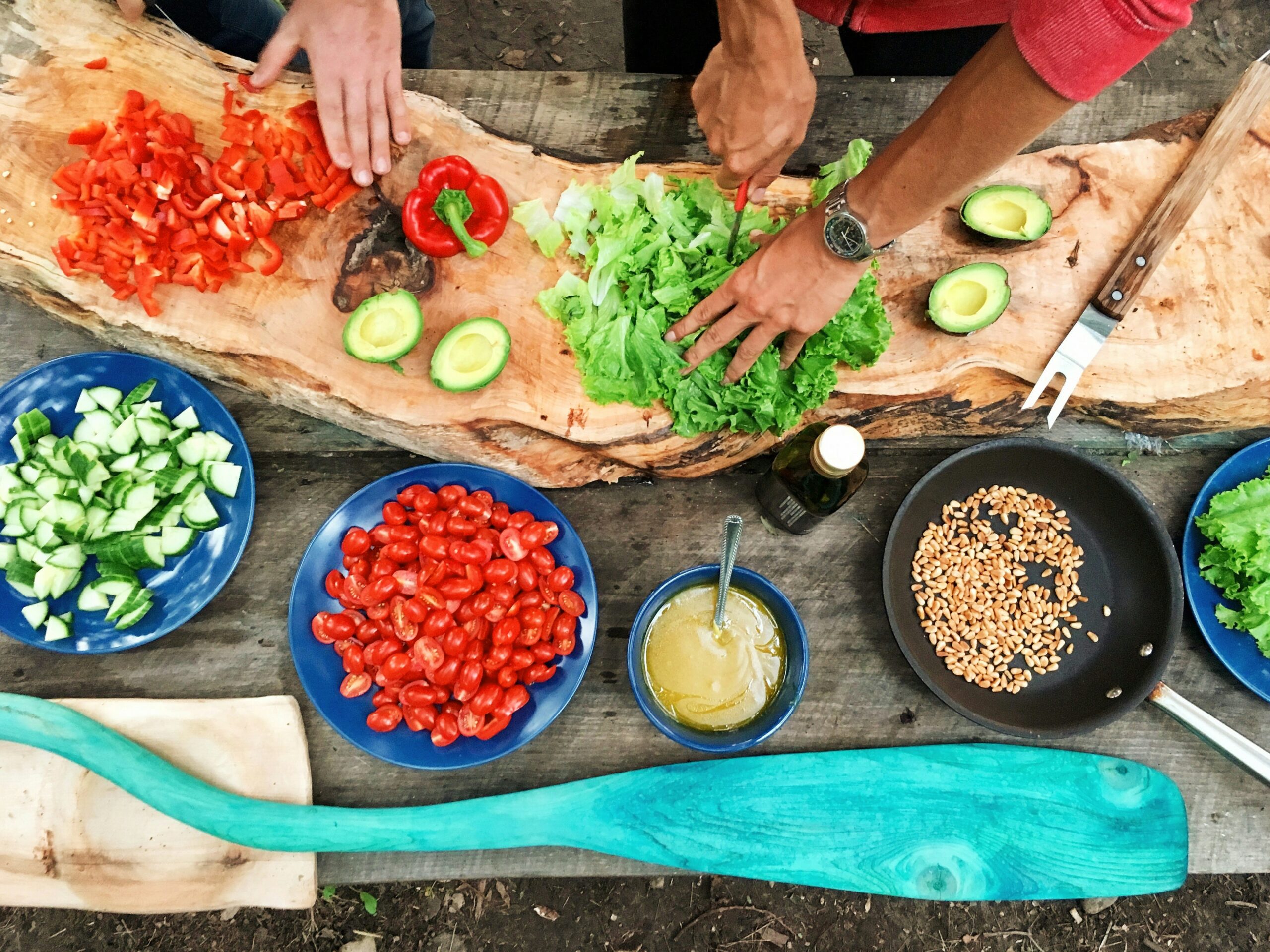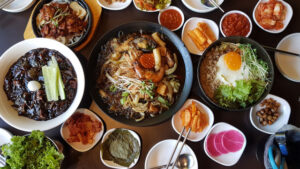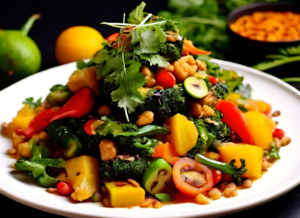Introduction
Ethiopian cuisine is renowned for its bold flavors, aromatic spices, and communal dining traditions. In this article, we’ll embark on a culinary adventure through the vibrant flavors of Ethiopia, exploring authentic recipes that will spice up your life and tantalize your taste buds.
Exploring Ethiopian Culinary Heritage
Rich History and Diverse Influences
Ethiopian culinary heritage is steeped in a rich history that spans thousands of years and reflects the country’s diverse cultural influences. Situated at the crossroads of Africa, the Middle East, and the Indian Ocean, Ethiopia has been a melting pot of civilizations, trade routes, and culinary traditions for millennia.
Ethiopian cuisine is influenced by a variety of factors, including indigenous ingredients, ancient cooking techniques, and cultural exchanges with neighboring regions. From the ancient civilizations of Aksum and Axumite to the Ethiopian Orthodox Church and the diverse ethnic groups that inhabit the country, Ethiopia’s culinary heritage is a reflection of its complex history and vibrant cultural tapestry.
Emphasis on Communal Dining and Sharing of Meals
Ethiopian cuisine is characterized by its emphasis on communal dining and the sharing of meals with friends and family. In Ethiopian culture, food is more than just sustenance—it is a symbol of hospitality, generosity, and social cohesion.
Traditional Ethiopian meals are served on large platters called mesobs, which are placed in the center of the table and shared among diners. Diners eat with their hands, using pieces of injera (a spongy flatbread made from teff flour) to scoop up bites of food and sauce. This communal style of dining fosters a sense of unity and togetherness, allowing diners to connect and bond over a shared culinary experience.
Signature Flavors and Spices Unique to Ethiopian Cuisine
Ethiopian cuisine is renowned for its bold flavors and unique spices, which give its dishes their distinctive taste and aroma. Key spices and herbs used in Ethiopian cooking include berbere (a fiery blend of chili peppers, garlic, ginger, and other spices), mitmita (a spicy seasoning made from chili peppers and spices), and niter kibbeh (a clarified butter infused with spices).
In addition to spices, Ethiopian cuisine also features signature ingredients such as injera, which serves as the foundation of many meals, and tej (a traditional honey wine) which is often enjoyed during festive occasions. Other staple ingredients include lentils, chickpeas, and a variety of vegetables such as cabbage, carrots, and potatoes.
Essential Ingredients in Ethiopian Cooking
Authentic Ethiopian Recipes
Rich History and Diverse Influences
Ethiopian culinary heritage boasts a rich history shaped by diverse influences over thousands of years. Situated at the crossroads of Africa, the Middle East, and the Indian Ocean, Ethiopia has been a cultural melting pot where various civilizations, trade routes, and culinary traditions intersected.
Ethiopian cuisine reflects the country’s complex history through a fusion of indigenous ingredients, ancient cooking techniques, and cultural exchanges with neighboring regions. From the ancient civilizations of Axum and Aksumite to the influence of the Ethiopian Orthodox Church and the diverse ethnic groups within the country, Ethiopian culinary traditions have evolved over time, resulting in a diverse and vibrant culinary tapestry.
Emphasis on Communal Dining and Sharing of Meals
Communal dining and the sharing of meals hold significant importance in Ethiopian culture. Ethiopian cuisine is traditionally served on large platters known as mesobs, which are placed in the center of the table and shared among diners. This communal style of dining fosters a sense of unity, togetherness, and social interaction among family members, friends, and even strangers.
The use of injera, a spongy flatbread made from teff flour, further emphasizes the communal aspect of Ethiopian dining. Injera serves as both a utensil and a staple food item, with diners using torn pieces of injera to scoop up various dishes and sauces from the shared platter. This shared culinary experience strengthens bonds, facilitates communication, and reinforces the value of hospitality within Ethiopian communities.
Signature Flavors and Spices Unique to Ethiopian Cuisine
Ethiopian cuisine is renowned for its bold flavors and unique spices, which contribute to its distinctive taste profile. Key spices and herbs commonly used in Ethiopian cooking include berbere, a complex and aromatic spice blend made from chili peppers, garlic, ginger, fenugreek, and other spices. Berbere adds depth, heat, and complexity to Ethiopian dishes, such as stews, lentils, and meat-based dishes.
Another essential spice blend in Ethiopian cuisine is mitmita, a fiery seasoning made from chili peppers and spices, which imparts intense heat and flavor to dishes. Additionally, niter kibbeh, a clarified butter infused with spices like garlic, ginger, and cardamom, is used to enhance the richness and aroma of Ethiopian dishes.
FAQs
Q: What is Ethiopian cuisine known for? A: Ethiopian cuisine is known for its rich flavors, aromatic spices, and unique cooking techniques, including the use of injera, a spongy flatbread, and various stew-like dishes known as wats.
Q: What are some staple ingredients in Ethiopian cooking? A: Staple ingredients in Ethiopian cooking include spices such as berbere and mitmita, lentils, chickpeas, vegetables like cabbage and carrots, and meats like chicken, beef, and lamb.
Q: What is injera and how is it used in Ethiopian cuisine? A: Injera is a sourdough flatbread made from teff flour. It serves as both a staple food and utensil in Ethiopian cuisine, used to scoop up stews and other dishes.
Q: What is berbere spice blend and what dishes is it used in? A: Berbere is a spicy Ethiopian spice blend made from chili peppers, garlic, ginger, and various other spices. It is used to flavor dishes such as doro wat (chicken stew) and misir wat (spicy lentil stew).
Q: Are Ethiopian dishes typically vegetarian-friendly? A: Yes, Ethiopian cuisine offers a wide range of vegetarian and vegan options, including lentil and vegetable stews, as well as dishes made with injera and various spices. However, meat dishes are also prevalent in Ethiopian cuisine.
Q: How can I make Ethiopian coffee at home? A: To make Ethiopian coffee at home, roast Ethiopian coffee beans, grind them finely, and then brew them using a traditional Ethiopian coffee pot called a jebena. Serve the coffee in small cups with sugar on the side.
Conclusion
Exploring authentic Ethiopian recipes is a delightful journey into the heart of Ethiopian culinary traditions. By trying out these recipes at home, you’ll be able to experience the rich flavors and communal spirit of Ethiopian dining. So why not embrace the bold and flavorful dishes of Ethiopia and spice up your life with these delicious recipes? With each bite, you’ll be transported to the colorful markets of Addis Ababa or the bustling streets of Lalibela, experiencing the vibrant culinary culture of Ethiopia firsthand.




